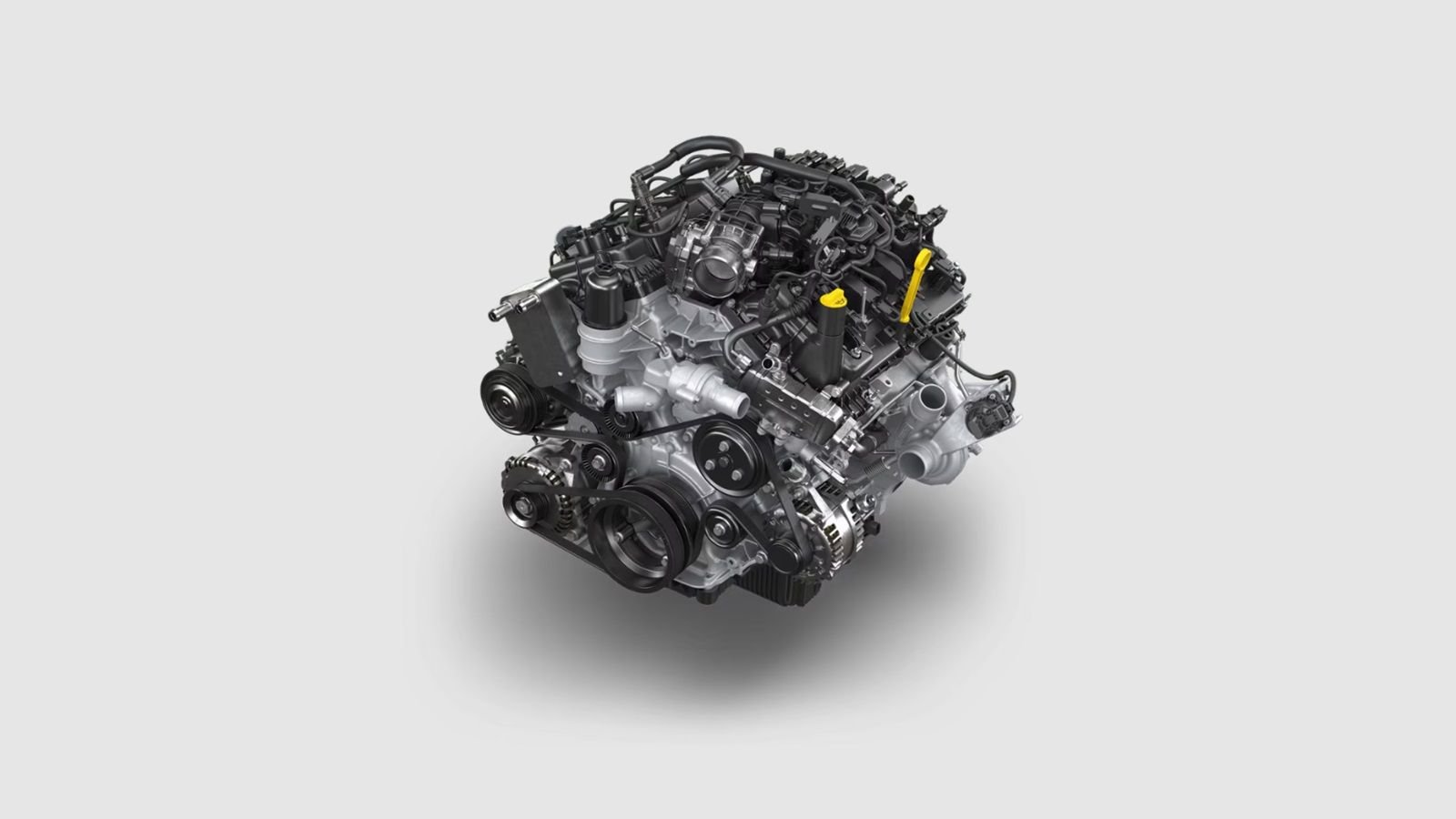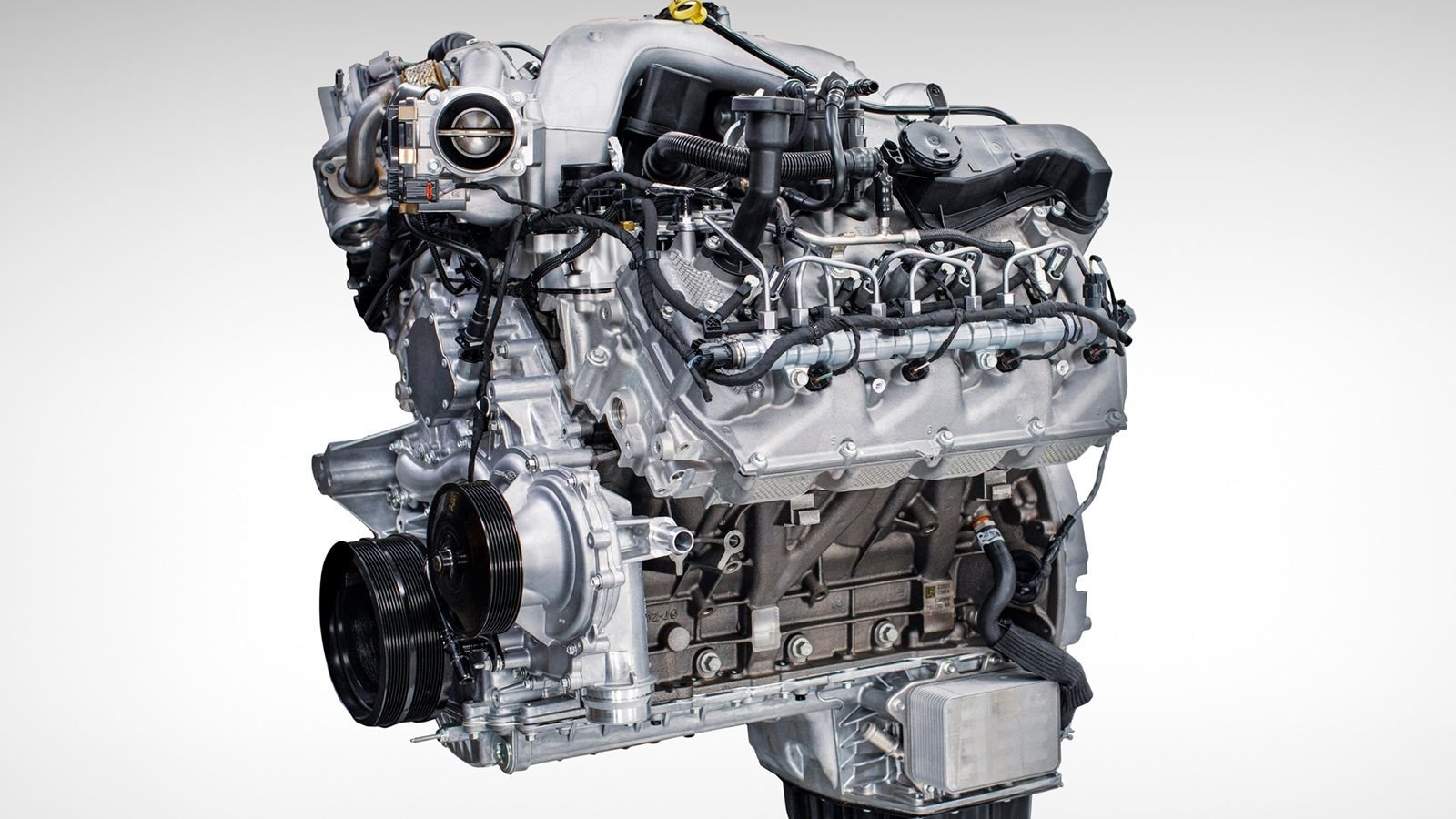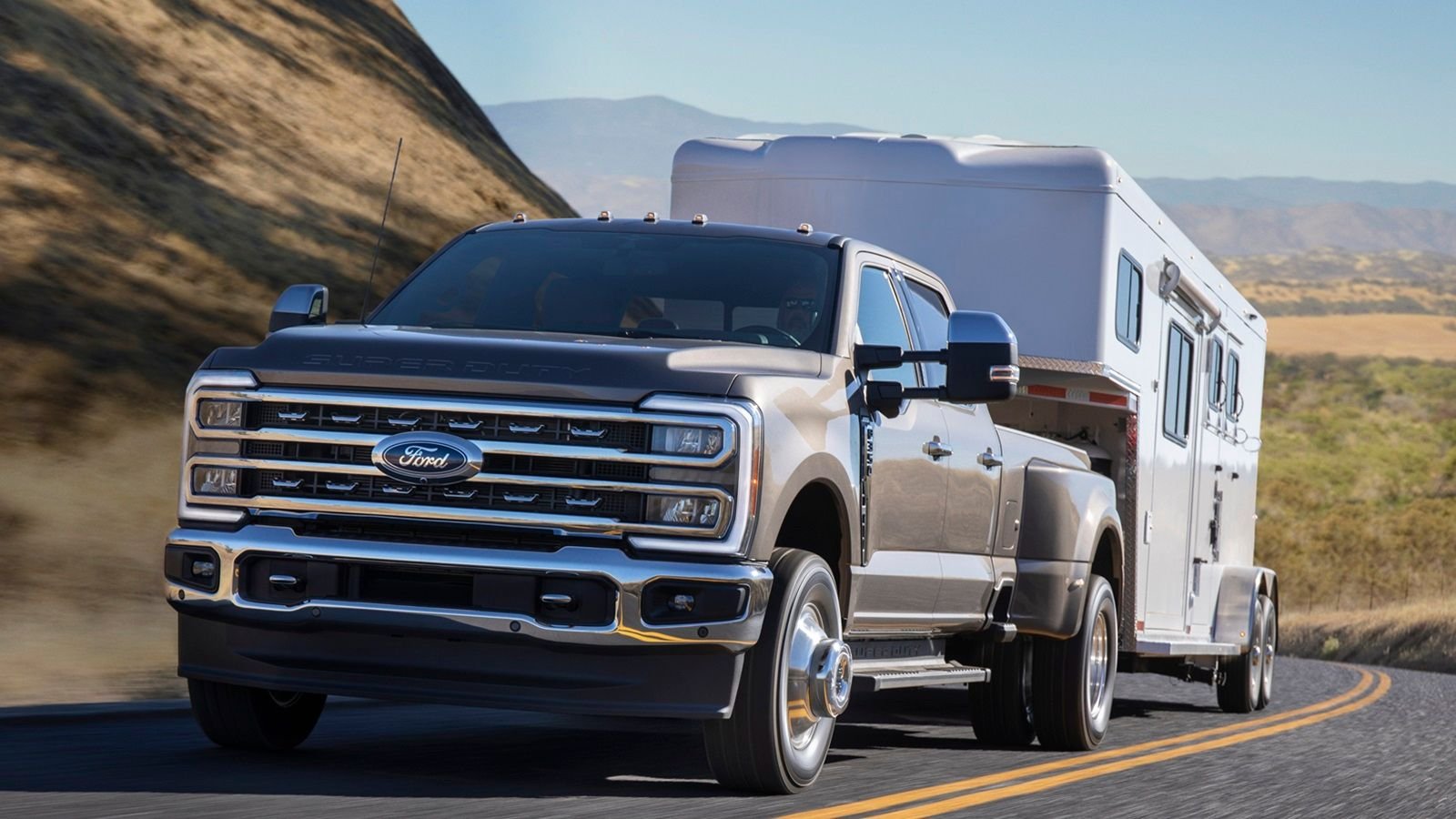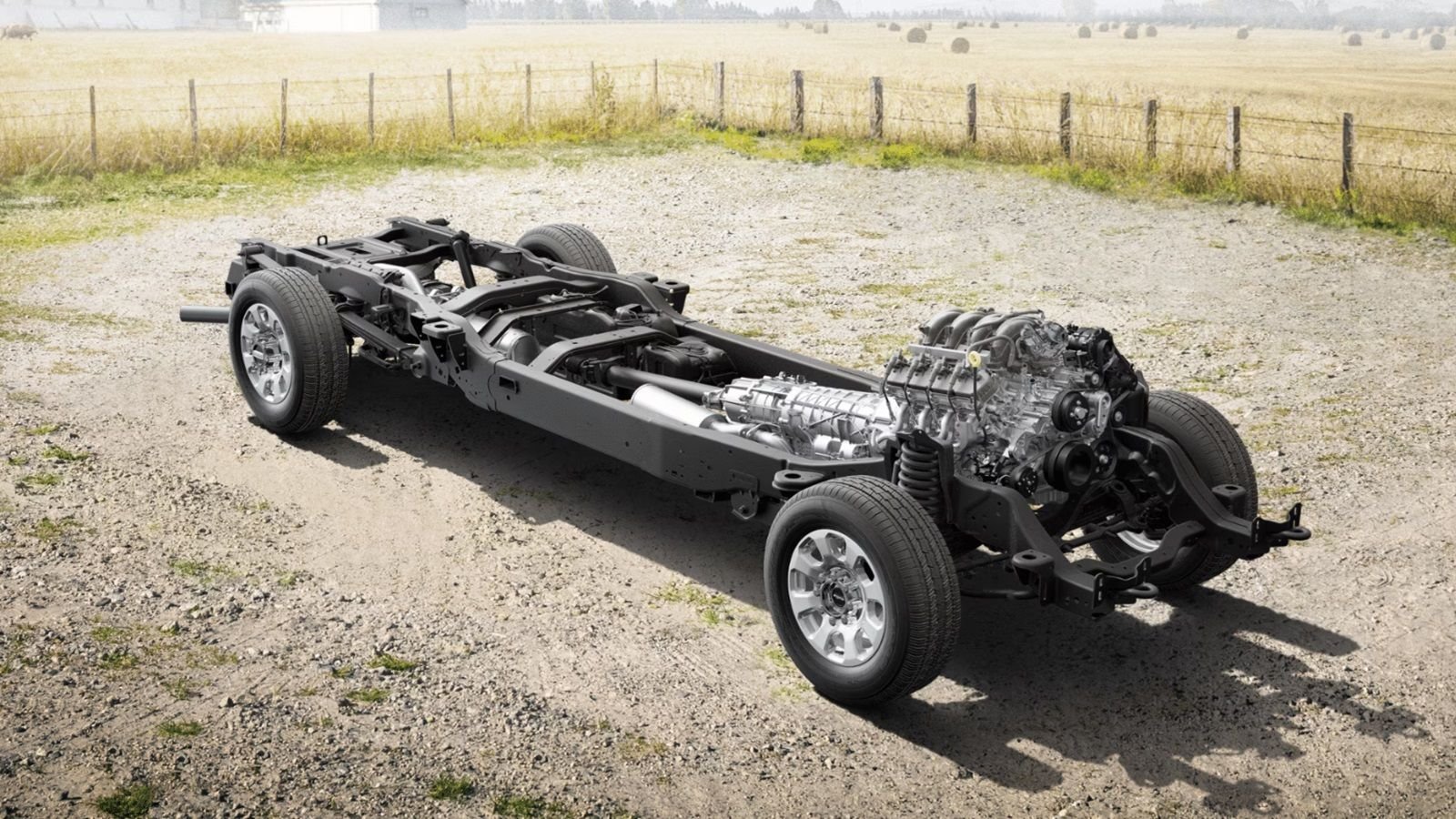The Pros & Cons of Ford's Most Popular F-Series Engines (2.7L, 3.5L, 5.0L, 6.7L, 7.3L)
In 2024 there are no bad Ford F-series truck engines, but each one has a set of pros and cons.






















Intro
We are a bit spoiled for choice when it comes to Ford F-series truck engine options in 2024. Twenty years ago, the most powerful F-150 engine you could buy (outside of the SVT Lightning) was the 5.4L Triton V8 making 300 horsepower. Today even the weakest F-150 V6 engine makes more power. The point is that there are really no truly bad engine choices in modern Ford trucks. Of course, each engine does have its own set of pros and cons. And understanding those will help you decide on the best engine for your needs.
So, today we are looking at the five most popular engines in the Ford F-series lineup. These are the 2.7L V6 EcoBoost, the 3.5L V6 EcoBoost/PowerBoost, the 5.0L Coyote V8, the 6.7L Power Stroke/High Output, and the 7.3L V8. They are all capable engines, but we are looking at them with a more critical eye and listing the pros and cons for each.
Photo credit: Michael S. Palmer
2.7L EcoBoost V6 – Pros
The 2.7L EcoBoost V6 serves as the base engine in most of the lower trim F-150 models. (With the wonderful exception of the F-150 XL Regular Cab that Ford blesses with the 5.0L V8.) In any case, the 2.7L puts up some decent numbers. 325 horsepower, 400 pound-feet of torque. Available max towing rating of 8,400 pounds and max payload of 1,775. That is pro number one. For a base engine, the 2.7L provides enough performance to satisfy most F-150 owners. Another pro is the cost. Upgrading to a more powerful engine in say an F-150 STX is going to cost you at least $1,500.
The 2.7L also offers slightly better fuel economy when compared to the available 5.0L V8. The 2.7L is a well-built engine with a stout compacted graphite iron block which is both lighter and stronger than cast iron. That combined with the off-set connecting rod setup means this little gas engine is built almost like a diesel. The 2.7L has proven to be more reliable than the larger 3.5L EcoBoost.
Photo Credit: Ford
2.7L EcoBoost V6 – Cons
The 2.7L EcoBoost is a great base engine, but it does have a few downsides. The 2.7L EcoBoost has proven to be reliable, however, it is a small displacement, twin-turbo engine. If you are buying a truck with the plans of putting a couple hundred thousand miles on it, a simpler naturally aspirated engine may prove more reliable long term. Another con of the 2.7L is simply that it is a 2.7L. Most folks are used to having truck engines with a much larger displacement. This engine has the stigma of being just a ‘base’ engine with a small displacement. That might put some people off. If that doesn’t, then the uninspiring exhaust sound might.
And as capable as the 2.7L is, it simply can’t tow and haul like the more powerful Ford truck engines. So, if you really need maximum capability, the 2.7L is not for you.
Photo Credit: Ford
3.5L EcoBoost / PowerBoost V6 – Pros
The 3.5L EcoBoost and PowerBoost are different engines but similar enough that we are combining them. However, some pros and cons are specific to the model and we will make that clear as we go. There is also a 3.5L High Output but that is only in the Raptor, so we are not including it here. From a numbers perspective, the EcoBoost puts out 400 horsepower and 500 pound-feet of torque. The PowerBoost figures are 430 horsepower and 570 pound-feet of torque. Max towing for the EcoBoost is 13,500 pounds, and max payload is 2,445. The PowerBoost is 11,200 pounds and 1,775 pounds towing and payload respectively. So, the most obvious pro is that both of these are very powerful engines. Not too long ago these were Power Stroke diesel numbers.
The PowerBoost is a full hybrid engine and that means it not only offers decent fuel economy but it also comes with Pro Power Onboard that allows you to use the truck as a mobile generator. No other Ford engine on this list offers this. The EcoBoost 3.5L is standard on the upper trims such as the King Ranch and Platinum. Ford clearly positions this as the premium engine choice in the range.
Photo Credit: Ford
3.5L EcoBoost / PowerBoost V6 – Cons
The 3.5L engines are not quite as reliable as others on this list. In fact, if we were forced to rank these engines by reliability, the 3.5L units would probably be last. Cam phasers and timing chain wear are a couple weak points. These engines are also expensive to buy. You need to either step up to a high trim truck or option it into a lower spec truck. Fuel savings over a 5.0L V8 not as large as you might think. If you are in the boost a lot when you drive, don’t expect to be saving much fuel. Like the 2.7L engine, these 3.5L engines don’t make the most thrilling sounds.
Photo Credit: Ford
5.0L Coyote V8 – Pros
You can still get a naturally aspirated V8 engine in a 2024 Ford truck. Thank you Ford! It makes 400 horsepower and 410 pound-feet of torque. It can tow 12,900 pounds and haul up to 2,230 pounds. More than enough for most. And it is a V8. A Ford truck should be powered by a V8. Nothing else sounds like a V8 or delivers power like a V8. Lifting the hood of a Ford truck and seeing a V8, means all is right with the world. And the fuel mileage penalty compared to the smaller F-150 engines is not as much as you would think. In addition, adding the V8 option is going to be slightly less expensive than going with the 3.5L units. This is also a proven and reliable powerplant.
Photo Credit: Ford
5.0L Coyote V8 – Cons
We love the V8, but even we have to admit that it is older technology. In some ways that is a good thing, but the turbo engines, and the hybrid offer features and capabilities the V8 cannot. While fuel economy is not bad, it can’t match the smaller displacement engines. It is more expensive than the 2.7L EcoBoost and if you don’t need the extra towing capacity or care about the V8 sound, it might not be worth the money. Also worth noting for the used market, Coyotes are known for developing oil leaks over their lifetimes, Gen 2 motors are known to leak coolant, and Gen 1 motors sometimes suffer from soft valves.
Photo Credit: Ford
6.7L Power Stroke / High Output – Pros
Now we are moving to the Super Duty engines. And here we have the powerhouse 6.7L Power Stroke and Power Stroke High Output units. These beasts put up eye-popping numbers. 475 horsepower and 1,050 pound-feet of torque for the standard 6.7L and 500 horsepower and 1,200 pound-feet of torque for the high output version. All while getting fantastic fuel economy compared to gasoline motors pulling equivalent loads. Properly configured, a Ford with the 6.7L High Output engine can tow 40,000 pounds. The power numbers and tow ratings are best-in-class. If you don’t care so much about towing, that is OK because these engines also make your Super Duty a sport truck. Last year Car and Driver got an F-250 with the 6.7L High Output engine to 60 mph in just 5.5 seconds. That is in a four-ton truck. No engine is perfect, and the 6.7L High Output is fairly new, but we expect that both of these engines will last for many, many years.
Photo Credit: Ford
6.7L Power Stroke / High Output – Cons
Hold onto your wallet because these engines are expensive. On an F-250 XLT adding the 6.7L will cost you $9,995 and the 6.7L High Output is a $12,495 option. Ouch. Speaking of expensive, modern diesel engines are extremely complicated, with high-pressure fuel systems and lots of emissions equipment. If these systems are not maintained perfectly, they're extremely expensive to fix. The 6.7L PowerStroke is also hundreds of pounds heavier than the gas equivalent, which means Ford has to make the base suspensions stiffer to compensate, leading to a rougher ride around town. Lastly, the new High Output engine is still unproven. We assume it will be generally reliable, but the jury is still out. The gas engines in the Super Duty are so good that for many, the Power Stroke is not worth the hassle/expense.
Photo Credit: Ford
7.3L ‘Godzilla’ V8 – Pros
The 7.3L V8 is standard on most mid-grade and higher Super Duty trucks. And what a standard engine it is. It is the most powerful gas engine in its class. 430 horsepower and 485 pound-feet of torque. Those may not be Power Stroke numbers, but they are still good for a maximum tow rating of over 22,000 pounds. That is a lot of ability for an engine that comes standard with the truck. Not only do you not have to mess around with adding DEF and buying expensive diesel fuel, but the 7.3L will run on regular 87 octane. This engine is also a peach if you want to add some forced induction. People are swapping these engines into all sorts of projects cars for good reason. They are dead reliable, even when you add power. This iron block, pushrod engine should last forever.
Photo Credit: Ford
7.3L ‘Godzilla’ V8 – Cons
This is a powerful and capable engine, but if you really need to tow heavy loads often, the 7.3L is not as good an option as the 6.7L Power Stroke units. And if you do tow with the Godzilla, prepare to pay at the pump because fuel economy drops noticeably when towing. It's also expensive to add on a base truck. If you want the 7.3L on a base F-250 XL 4x2, it will cost you nearly $10K. On a 4x4 it is a near $7K upcharge. If you like your Super Duty to have that big rig diesel sound, you won’t get that from the 7.3L.
Photo Credit: Ford
